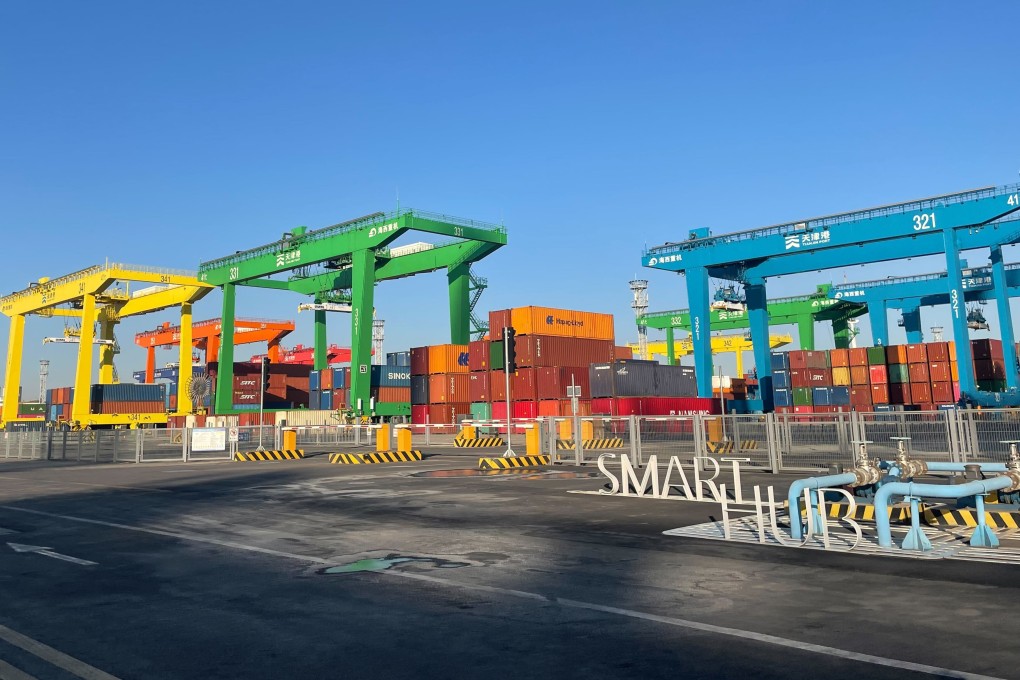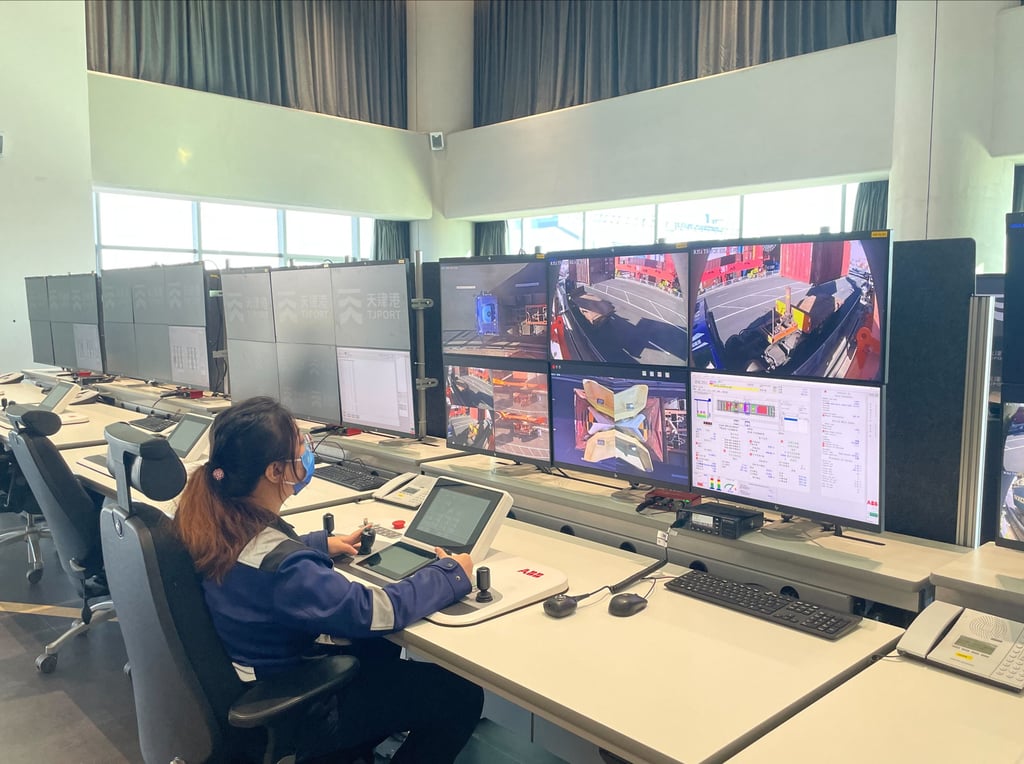Huawei’s automated smart terminal at Tianjin Port offers glimpse of company’s future under US sanctions
- Huawei and the Port of Tianjin collaborated to run a smart terminal that automates operations using self-driving vehicles, 5G, IoT and other tech
- The telecoms equipment maker has sought new forms of revenue after US sanctions hobbled its smartphone business

Sixty kilometres from downtown Tianjin, a coastal metropolis southeast of Beijing on the shore of the Bohai Sea, cranes towering over a ship at the largest port in Northern China offload containers onto an electric vehicle that brings the goods to land. It is an all-too-familiar process to any dockworker, except this particular terminal has no workers on the ground at all.
The reason no humans are allowed in the automated area of the terminal is that they are the most unpredictable factor for such systems. When the automated system encounters a situation it cannot handle, the problem is sent to a control centre, where employees control the system remotely.

At traditional terminals, by contrast, dockworkers control the cranes themselves to ensure containers are put in the right place, then human drivers transport the containers along the same routes each day.
“At the beginning, [the Port of Tianjin] told us that it is very difficult to hire drivers, and after recruitment, the attrition rate for drivers was very high,” said Yue Kun, chief technology officer at Huawei’s Smart Road, Waterway & Port Business Unit.
Yang Jiemin, vice-president of Tianjin Port Group, said the new smart terminal needs just 200 workers compared with 800 at a traditional terminal.
“At traditional container terminals, all equipment, including large-scale equipment, and every vehicle require a driver,” he said. “So with this technology, we are able to see a big reduction in required manpower.”
With this project, Huawei is seeking to tap into a global smart port market expected to reach US$11.15 billion by 2030, according to a recent report from Research and Markets.